
May 2022
What Causes Pain in the Arch?
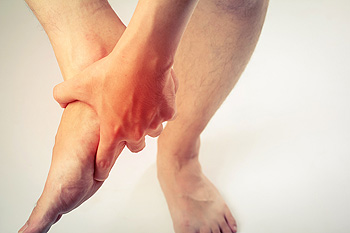
If you are experiencing pain along the inside of the arch on your foot, it may be caused by a strain of the abductor hallucis muscle. Strains can range from a mild stretch to a complete tear or rupture. Symptoms include pain and tenderness when you press the sole of the foot especially on the inside, as well as swelling and loss of function depending on the severity. The abductor hallucis muscle runs from the heel to the big toe. Its main job is to support the arch and keep it from rolling inward, also known as overpronation, with each step. A mild strain may go away after a few days with rest from the activity that caused it. Icing the affected foot may also help relieve the pain. If the symptoms continue or worsen, it is a good idea to see a podiatrist for an examination. Treatment may include anti-inflammatory medication, ultrasound therapy, or custom orthotics.
Foot Pain
Foot pain can be extremely painful and debilitating. If you have a foot pain, consult with Dr. Randy Garr from Utah. Our doctor will assess your condition and provide you with quality foot and ankle treatment.
Causes
Foot pain is a very broad condition that could be caused by one or more ailments. The most common include:
- Bunions
- Hammertoes
- Plantar Fasciitis
- Bone Spurs
- Corns
- Tarsal Tunnel Syndrome
- Ingrown Toenails
- Arthritis (such as Gout, Rheumatoid, and Osteoarthritis)
- Flat Feet
- Injury (from stress fractures, broken toe, foot, ankle, Achilles tendon ruptures, and sprains)
- And more
Diagnosis
To figure out the cause of foot pain, podiatrists utilize several different methods. This can range from simple visual inspections and sensation tests to X-rays and MRI scans. Prior medical history, family medical history, and any recent physical traumatic events will all be taken into consideration for a proper diagnosis.
Treatment
Treatment depends upon the cause of the foot pain. Whether it is resting, staying off the foot, or having surgery; podiatrists have a number of treatment options available for foot pain.
If you have any questions, please feel free to contact our office located in Provo, UT . We offer the newest diagnostic and treatment technologies for all your foot care needs.
Relief for Sore Feet
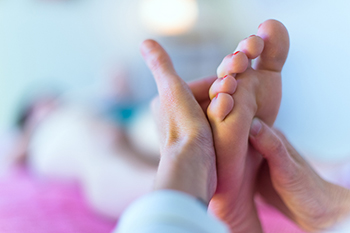
We all have sore feet from time to time. After all, our feet do a lot of work for us and put in long hours. There are a variety of ways to soothe sore feet at home. Generally, using a combination of treatments work best to revitalize sore feet. Warm foot baths using Epsom salts can relieve swollen, painful feet. Stretching the toes and heels can aid with foot pain by increasing flexibility and preventing cramping. Foot pain can be avoided by strengthening and resistance exercises to help keep feet strong and limber. Orthotics or arch supports can help stabilize the feet and eliminate discomfort. Simple icing of aching feet can reduce inflammation that may be caused by soreness. Wearing night splints can help with keeping feet stretched properly to avoid or control foot pain. If you have painful, achy feet or tingling or numbness in your feet, a podiatrist should be consulted and treatment prescribed.
Foot therapy is often necessary for those recovering from either foot deformities or foot injuries. If you have concerns regarding therapy, consult with Dr. Randy Garr from Utah. Our doctor can provide the care you need to keep you pain-free and on your feet.
Most Common Injuries
People who are active or athletes are prone to a variety of injuries. Therefore, it is often important to take part in physical therapy in order to quickly get back on the right track.
What to Do When Injured
Physical Therapy – This specialized treatment will focus on the affected area, speeding up recovery and the overall healing process. It is a proven method that has helped millions of people return from any injury.
During physical therapy you will undergo regimented training to get back into full form. Training is often very difficult, especially at first when the foot feels weak. Physical therapy often involves:
Basic stretching and twisting exercises – getting the feet’s mobility and flexibility up.
Massaging – the therapist will massage the injured area in order to activate the muscles and relax them.
Strengthening Exercises – this allows the muscles in the affected area to regain their full strength, a vital step towards full recovery.
If you have any questions please feel free to contact our office located in Provo, UT . We offer the newest diagnostic tools and technology to treat your foot and ankle needs.
Have I Broken or Sprained My Toe?
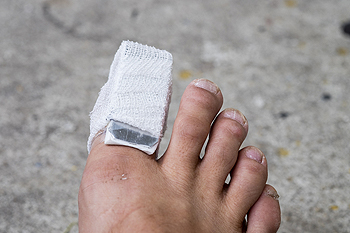
Many people have stubbed their toe by hitting it or dropping something heavy on it, felt pain, and wondered if it was broken. It might be a sprain but it is important to know if the toe is broken because if left untreated, a broken toe can lead to problems in movement and later down the road, potential for osteoarthritis or nerve damage. If you hear a bone break, feel intense pain and the toe swells, see discoloration, or have trouble putting weight on it, the toe might be broken. With a bad break, there can be a dislocation and the toe will look like it is at an odd angle. With a sprained toe, all the same symptoms may be present but the toe should not look dislocated and it should feel better sooner than a broken toe. Also, with a break, the pain is often felt right where the fracture has taken place versus being more generalized around the toe with a sprain. Prevent such injuries to your toes by refraining from going barefoot, especially in the dark and in unfamiliar areas. If symptoms do not get better in a few days, it is suggested to see a podiatrist who will take X-rays and provide you with a definitive diagnosis and appropriate treatment.
Broken toes may cause a lot of pain and should be treated as soon as possible. If you have any concerns about your feet, contact Dr. Randy Garr from Utah. Our doctor will treat your foot and ankle needs.
What Is a Broken Toe?
A broken toe occurs when one or more of the toe bones of the foot are broken after an injury. Injuries such as stubbing your toe or dropping a heavy object on it may cause a toe fracture.
Symptoms of a Broken Toe
- Swelling
- Pain (with/without wearing shoes)
- Stiffness
- Nail Injury
Although the injured toe should be monitored daily, it is especially important to have a podiatrist look at your toe if you have severe symptoms. Some of these symptoms include worsening or new pain that is not relieved with medication, sores, redness, or open wounds near the toe.
If you have any questions, please feel free to contact our office located in Provo, UT . We offer the newest diagnostic and treatment technologies for all your foot care needs.
Plantar Warts Can Be Treated!
What Goes Into Designing and Manufacturing Custom Orthotics
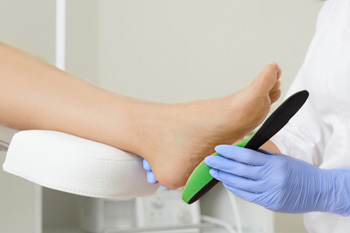
Designing and producing custom orthotics that will effectively treat the specific condition of a patient requires a great deal of work by a podiatrist. First, the patient must be thoroughly examined, and imaging tests may be necessary for the podiatrist to diagnose the condition. The podiatrist must then determine what type of orthotic is necessary to treat the condition. Orthotics are often categorized as either functional or accommodative. Functional orthotics may be created to help patients with conditions including plantar fasciitis, heel spurs, and pronation issues. They are typically manufactured with thinner and firmer materials. Accommodative orthotics use thicker, less rigid materials and can be used to treat neuropathy, diabetic foot conditions, Charcot disease, and more. Other considerations that podiatrists take into account when designing a custom orthotic include the patient’s lifestyle, the type of shoes they wear, their weight, and shoe size. If you are experiencing pain, discomfort or limited mobility, consult with a podiatrist to explore whether you can benefit from custom orthotics.
If you are having discomfort in your feet and would like to try orthotics, contact Dr. Randy Garr from Utah. Our doctor can provide the care you need to keep you pain-free and on your feet.
What Are Orthotics?
Orthotics are inserts you can place into your shoes to help with a variety of foot problems such as flat feet or foot pain. Orthotics provide relief and comfort for minor foot and heel pain but can’t correct serious biomechanical problems in your feet.
Over-the-Counter Inserts
Orthotics come in a wide variety of over-the-counter inserts that are used to treat foot pain, heel pain, and minor problems. For example, arch supports can be inserted into your shoes to help correct overarched or flat feet, while gel insoles are often used because they provide comfort and relief from foot and heel pain by alleviating pressure.
Prescription Orthotics
If over-the-counter inserts don’t work for you or if you have a more severe foot concern, it is possible to have your podiatrist prescribe custom orthotics. These high-quality inserts are designed to treat problems such as abnormal motion, plantar fasciitis, and severe forms of heel pain. They can even be used to help patients suffering from diabetes by treating foot ulcers and painful calluses and are usually molded to your feet individually, which allows them to provide full support and comfort.
If you are experiencing minor to severe foot or heel pain, it’s recommended to speak with your podiatrist about the possibilities of using orthotics. A podiatrist can determine which type of orthotic is right for you and allow you to take the first steps towards being pain-free.
If you have any questions please contact our office located in Provo, UT . We offer the newest diagnostic and treatment technologies for all your foot and ankle needs.
Types of Bunion Surgery
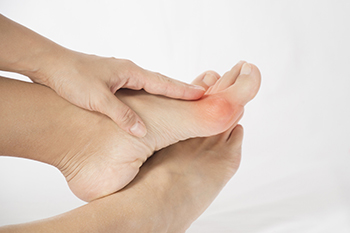
A bunion is easy to identify. It is defined as a bony protrusion on the side of the big toe and the skin may appear to be red. A bunion can develop as a result of genetic factors, or from wearing shoes that do not fit correctly. Some patients find it helpful to wear a cushion on top of the bunion as this may help to relieve some of the discomfort. Many times, larger shoes need to be purchased that can accommodate the bunion and surgery may be considered for permanent removal. There are several types of bunion surgeries that can be performed. A bunionectomy is performed to remove the bony growth, in addition to realigning the muscles, ligaments, and tendons. Having an osteotomy performed involves cutting the toe bone which may help to straighten the joints. When bones are fused, it is known as an arthrodesis. Additionally, an arthroplasty is done by removing the damaged joint, which is necessary in allowing scar tissue to form. If you have developed a bunion, it is strongly advised that you seek the care of a podiatrist who can provide the correct treatment method for you.
If you are suffering from bunion pain, contact Dr. Randy Garr of Utah. Our doctor can provide the care you need to keep you pain-free and on your feet.
What Is a Bunion?
Bunions are painful bony bumps that usually develop on the inside of the foot at the joint of the big toe. As the deformity increases over time, it may become painful to walk and wear shoes. Women are more likely to exacerbate existing bunions since they often wear tight, narrow shoes that shift their toes together. Bunion pain can be relieved by wearing wider shoes with enough room for the toes.
Causes
- Genetics – some people inherit feet that are more prone to bunion development
- Inflammatory Conditions - rheumatoid arthritis and polio may cause bunion development
Symptoms
- Redness and inflammation
- Pain and tenderness
- Callus or corns on the bump
- Restricted motion in the big toe
In order to diagnose your bunion, your podiatrist may ask about your medical history, symptoms, and general health. Your doctor might also order an x-ray to take a closer look at your feet. Nonsurgical treatment options include orthotics, padding, icing, changes in footwear, and medication. If nonsurgical treatments don’t alleviate your bunion pain, surgery may be necessary.
If you have any questions, please feel free to contact our office located in Provo, UT . We offer the newest diagnostic and treatment technologies for all your foot care needs.






